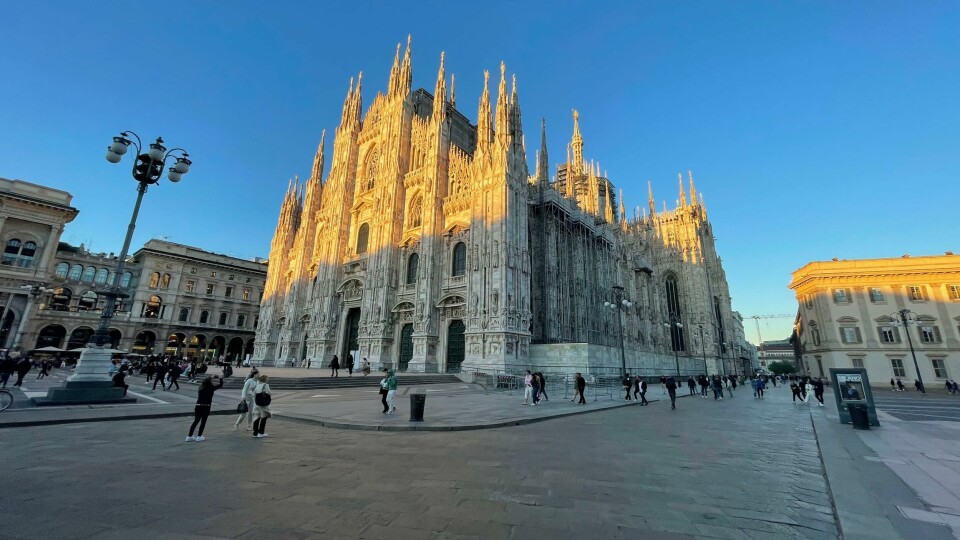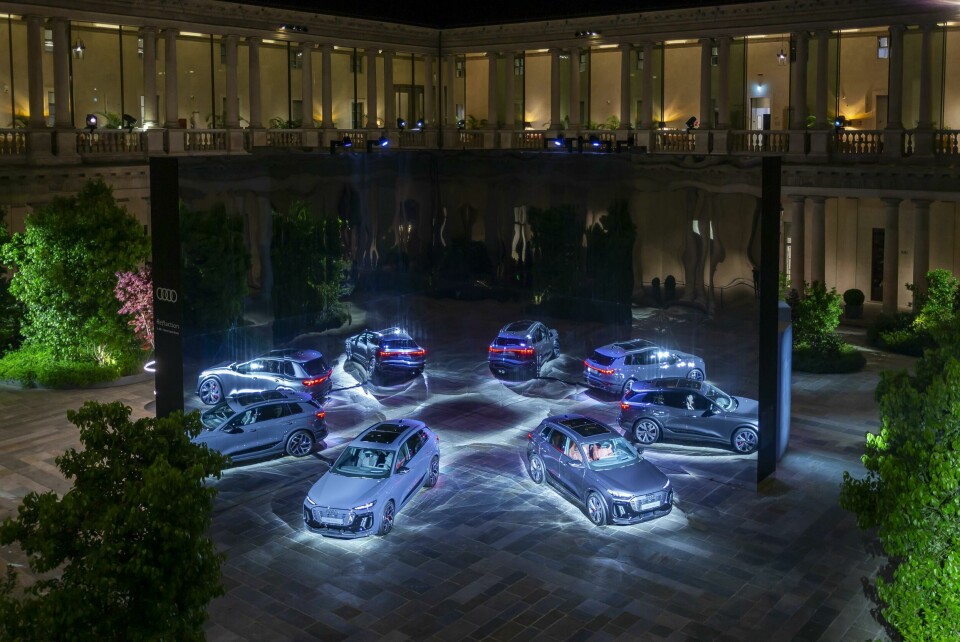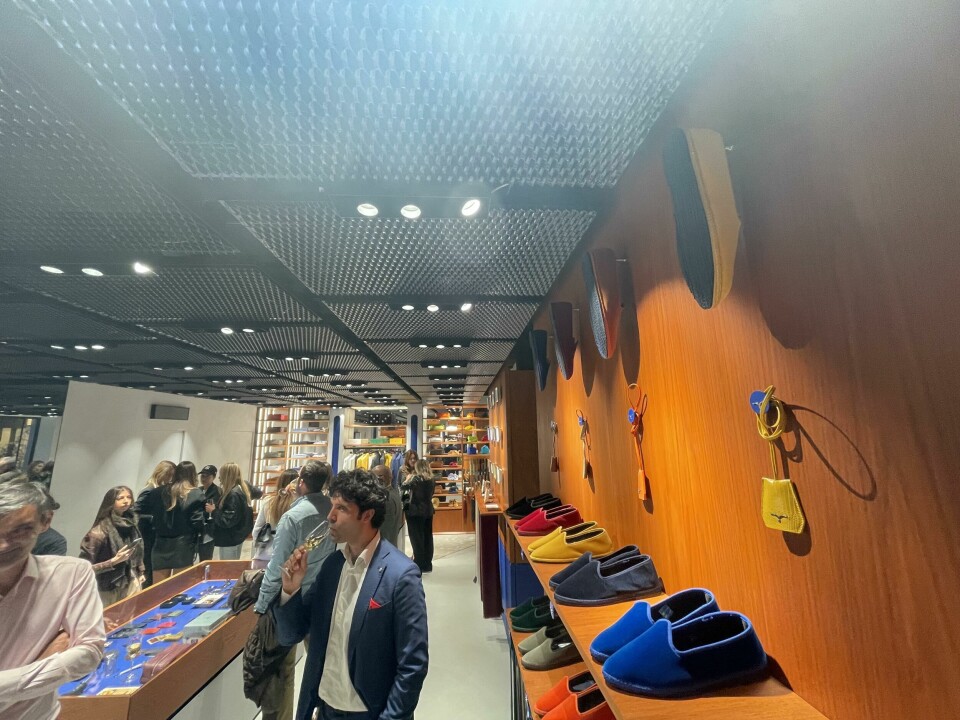
Milan, signal, manoeuvre
Why 2024’s Milan Design Week was a splendid edition, with car brands sliding into the wider design mix well (with only a few caveats)…
It’s so nice to report on a show – and a city – packed full of optimism and buzzing with the sounds and scenes of creative design and designers. Milan Design Week 2024 has to have been one of the best yet. Why? There are several reasons. Back to its traditional mid-April slot after the upheaval and postponements caused by the pandemic, the show’s timing would seem to suit carmakers – between late-February Geneva and later-April Beijing – and many marques attended in various ways and formats.
Alfa Romeo, Audi, Bentley, BMW, Bugatti, GAC, Honda, Italdesign, Kia, Lamborghini, Lancia, Lexus and Porsche all had exhibits, showing physical vehicles, cross-industry collaborations and accessories. Knowing the fierce competition for visitors’ eyeballs and impact in Milan, there was also a refreshing variety of approaches to displaying their design approach and wares.
Car Design News had plenty of foot soldiers on the ground and its own busy Car Design Night and conference at Maserati’s main Milanese dealer showroom – see separate reports on that event – so this is just one person’s perspective.

For those in the car design industry who haven’t yet attended Milan during Design Week I’d thoroughly recommend it. In simple terms it’s a combination of the traditional Salone del Mobile exhibition on the outskirts of the city – what used to be known as the ‘Milan Furniture Fair’ – and now 100s if not 1000s of creative pop-up exhibits and stands scattered across the city centre from design-led brands from the worlds of fashion, technology, furniture, lighting, automotive and more. It’s a format the IAA Munich Mobility show has in some ways tried to emulate, but with way more flair, experience and considerably more variety.
Either way, here are my highlights, from thoughtful and immersive physical displays from Kia and Lexus, to an amusing night out seeing the new Alfa EV – so nice they named it twice – plus some amazing product and graphic design (but perhaps with one too many mirrors and 80s-style synth solos)…
1. Kia gets creative: No smoke, but a lot of mirrors
One of the common installation themes at the Milan Design Week was the use of mirrors. Audi went big on them for its outdoor stand reflecting back its Milanese architectural surroundings and its new Q6 in an interestingly wobbly way, while Kia returned to its darkened mirrored halls of wonder vibe, replete with lots of laser lights, an approach started at its (first) 2023 Milan show outing.
Clearly the agencies behind the commissions for various brands are big fans of nonagenarian Japanese art legend Yayoi Kusama’s ‘Infinity Rooms’ – who isn’t? – but I would suggest we have perhaps now reached ‘peak mirror’.
To be fair to Kia, in addition to its slick finale hall of mirrors laser show room – which was still impressive and interesting to experience – there were other more DIY and experimental installations commissioned, including Anna Galtarossa’s ‘The Spirit of Disco’. This was a fun place to rest and gaze at the colourful canopy above – and more like something you might see as a Turner Prize contender – but the polar opposite of ‘slick’, which lends weight to Kia’s broader design philosophy of ‘Opposites United’.
“We wanted to do something different, not follow the same recipe as last year,” global design EVP Karim Habib told CDN. “We want to be patrons of the arts here in Milan, it’s not about the product, but the creative process.”
2. Lexus lights up – with added concept car
There was a pleasing circularity to one of the Lexus collaborations in Milan. The brand has been coming to the event since 2005 – an automotive pioneer in that respect – and at its first sponsored Milan design awards in 2013, Japan-born and now London- and Tokyo-based Hideki Yoshimoto, was crowned the best. (You may remember his award-winning entry of a swaying field of lights.) Anyway, Yoshimoto was invited back to create the lighting for the brand’s 2024 indoor installation too, this time featuring the LF-ZC concept car at its centre, suggesting more confidence on the part of Lexus to present its physical car designs as well as abstract creative ideas.
“The senior management understand it’s important to come out of your comfort zone, but it takes money and man-hours,” Simon Humphries, Lexus chief branding officer and head of design told CDN. “We get a chance to show the car we have here today to people who may not go to our traditional shows. That’s incredibly important. I also think it’s nice to put a vehicle in there as a piece of art – industrial art in this case – and have the people working with us work together with it.
We did ‘um and ah’ about it because up until now we have shied away from putting a real car in there, but I think this one is groundbreaking enough to merit its inclusion.” Humphries also confirmed again that the concept – first shown at the 2023 Tokyo Mobility Show – will go into production largely unchanged in 2026.
Outside that exhibition the LBX small crossover was a more traditional presentation, but in the nearby gardens there was also an updated version of the solar-powered slice-n-dice artwork based on the LF-ZC by Dutch designer Marjan van Aubel to view (first shown at 2023 Miami Art Basel). That too impressed in the flesh. One little downside to all this unfettered creativity though: sometimes a little judicious editing might be in order.
Case in point, on the Lexus opening press night, acclaimed soundtrack composer Keiichiro Shibuya went on longer than a regular press event would normally stomach and then proceeded to talk about how emotional it had all been for some time afterwards. Which made some of the assembled press pack a bit emotional too, but I suspect for different reasons. Kia did something similar and sonically too long last year in Milan. Note to both organisers: maybe save these ‘musical director’s cuts’ for a separate concert series.
3. Alfa’s non-Italian pickle: Milano to Junior
Alfa Romeo’s new electric small crossover broke cover a few days before Milan Design Week started. But by the time the hoards had arrived for the main design event, the brand’s marketing team had got into deep and scolding-hot water via the revelation that the car called “Milano” was not going to be built in Milan or even Italy, but Poland. This was logically to save costs and make it more competitive versus rivals from countries with lower wage costs (i.e. China). But high-profile Italian politician and ‘Made in Italy Minister’ Adolfo Urso declared its naming forbidden by national law and when the story refused to die down, Alfa’s top brass folded and renamed the car “Junior”.
This is a historic name from Alfa’s past – the 1966 GT 1300 had the same title – and fits with the crossover’s smaller sibling status to the bigger Stelvio, but it still represents something of a cock-up. Despite the furore, the car’s unveil on Tuesday 16th April at the fancy Larusmiani fashion shop in central Milan – where accessories included rainbows of brightly coloured soft slippers – still attracted many of the city’s automotively-inclined beautiful people.

Squeezed into the front window display the crossover still cut a dash in person from this limited viewing and hastily stuck-on “Junior” number plates front and back confirmed its new name. Crowbarring the 3D ‘Milano’ badges off the wheelarches would have been a harder job in a hurry though, so those remained attached, and acted as a reminder of a very Italian-style political kerfuffle.
4. Honda’s acrylic up-cycled city car (and even cooler bike)
Over at the Museo Diocesano, in the south of the city, the mood was altogether calmer (until the winds picked up). The serene courtyard setting was chosen by Honda to reveal its Sustaina-C, previously shown in flat red at the 2023 Tokyo Mobility Show late last year. In size and aesthetic terms, the concept looks like a potential replacement for the now discontinued 2020 Honda e production car, but this white version featured new body panels more explicitly showcasing their acrylic resin material – in this case recycled from second-hand automotive tail-lights – and resulting in a pleasing black marbling effect.
Although not yet production-feasible, the material has the advantage of being repeatedly recycled and also not requiring a coat of paint (traditionally a large source of emissions in the car-making process). Unfortunately the doors to a visible interior were not allowed to be opened – which seemed like a missed trick – but the Pocket concept scooter to its side saved the day. The foldable and very Japanese miniature mover did a great job of diverting visitors’ attentions and looked just as cool as the Sustaina-C, perhaps even cooler.
4. Pixom for president: 3D-printed product design wonders
Away from the car brand exhibits, Milan Design Week always throws up multiple – and varied – surprises. These intricate 3D-printed tables from Portuguese business Pixom were one such example…
5. Quality graphic design: Why Not?
With so much digital and three-dimensional design on display, it was truly delightful to encounter a room choc-full of 2D artworks, in this case two-by-two-metre colourful canvases created by Daniele Cima around the simple question “Why Not?” rendered in 42 different languages. “Why Not?” indeed.
6. Great food makes for a great show
Overall, Milan Design Week felt like a throughly successful show. It was a great opportunity to meet up with work colleagues and friends old and new and bump into a few more unexpectedly within a compact city and efficient timeframe. But most of all it was a place to absorb a veritable visual feast for the senses – as well as eat many actual ones – Milan’s superb restaurants and eating infrastructure providing the icing on an already beautifully made cake.




































